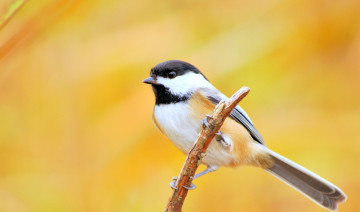{article.name}
Stay Informed
Wild Bird Care in August – Keep Your Feathered Friends Happy All Month Long

- Share this:
- Share on Facebook
- Pin on Pinterest
- Tweet on Twitter
August may be the tail end of summer, but for wild birds, it’s an important time of year. Many species are finishing up nesting, beginning their migration prep, or simply trying to stay cool and well-fed during the hottest days of the season. Whether you’re a seasoned bird watcher or just starting to invite birds into your yard, August is a great time to focus on care and support for your local feathered friends.
Here are some helpful wild bird care tips to keep your backyard buzzing with activity this month:
1. Keep Feeders Full (and Clean!)
Even with summer’s abundance, birds still benefit from consistent access to high-quality food. In August, many birds are fueling up for long migrations or feeding late-season chicks, so be sure your feeders are:
-
Cleaned regularly to prevent mold and disease.
-
Well-stocked with nutritious options like black oil sunflower seeds, nyjer seed for finches, or suet for woodpeckers (opt for no-melt suet in the heat).
-
Placed in safe, shaded spots to avoid spoilage and overheating.
Tip: Keep an eye out for young birds visiting your feeders—they may not be as skilled yet, so having a platform feeder can be helpful!
2. Offer Fresh Water Daily
Birds need water for drinking and bathing—especially during hot and dry spells. If you have a birdbath or shallow dish:
-
Refill it daily with clean, cool water.
-
Place it in the shade if possible to keep the water temperature down.
-
Add a few stones or pebbles so smaller birds have a place to perch safely.
A moving water source (like a dripper or solar fountain) will make your yard even more attractive, as birds are drawn to the sound and sparkle of running water.
3. Provide Shelter and Shade
The heat of August can be intense, and birds need cool, shaded places to rest during the day. You can help by:
-
Maintaining dense shrubs, trees, or brush piles for natural cover.
-
Letting some garden areas grow a little wild to provide safe hiding spots.
-
Adding birdhouses or roosting boxes for late-nesting species or year-round residents.
4. Avoid Pesticides and Chemicals
August gardens are full of buzzing pollinators, caterpillars, and other insects—many of which are important food sources for birds. Avoiding chemical treatments on your lawn and garden helps protect these natural food supplies and keeps the ecosystem in balance.
5. Start Preparing for Fall Migration
Some birds will begin migrating in late August, so it’s a good time to begin thinking ahead:
-
Keep feeders up and clean well into the fall to support early migrators.
-
Add variety to your food offerings to attract a broader range of species.
-
Watch for changes in bird activity—you may spot birds passing through that you don’t normally see!
You can also plant late-summer or early-fall blooming flowers like coneflowers, sunflowers, or black-eyed Susans to provide seeds and attract insects that birds will love.
6. Keep a Journal or Checklist
With migration season approaching, August is a fun time to start a birdwatching habit. Keep a journal or use a birding app to track which species visit your yard. You may be surprised by how many different types stop by!
Final Thoughts
Caring for wild birds in August is a great way to support your local ecosystem and enjoy the beauty and activity they bring to your yard. With a little food, water, and shelter, your backyard can be a safe and welcoming haven for birds—through August and into the fall season ahead.
Need help choosing the right seed mix, suet, or birdbath for your space? Stop by—we’re happy to help you support your feathered friends year-round!
Happy Birding!
Special Offers
We are constantly adding new specials to our site. Be sure to check back often!

Comments